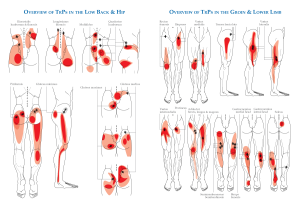What Is An Annular Tear?

Category: | Author:
Your spine is composed of vertebral bones that are separated by spinal discs. These intervertebral discs act as shock absorbers for the vertebrae they separate and they play a key role in helping your spine flex and move. Like any area of your body, these discs can wear down over time or as a result of an injury. One such issue that can develop with your discs is an annular tear. In today’s blog, we take a closer look at why these annular tears form and how they can be effectively treated.
Understanding Annular Tears
To understand annular tears, it helps to understand the basic formation of your spinal discs. Each intervertebral disc is made up of a hard fibrous outer layer called the annulus. This fibrous layer protects the fluid-filled center of the disc called the nucleus. The nucleus is primarily made up of water and is the catalyst of shock absorption in your spine. While it’s not a perfect example because it is much stronger, we oftentimes say to think of these discs like a jelly-filled donut. The soft gel-like center is enclosed by a more formative outer ring.
An annular tear occurs when a tear develops in this outer layer of the spinal disc. Depending on the size of the tear, you may not even notice it has developed, and in older adults, it’s completely reasonable to expect that most would show some degree of annular tearing upon imaging simply as a result of aging and natural stress over the years. Symptoms are more likely to develop when the tear is more significant, and some common symptoms include:
- Pain in the back
- Pain that radiates to your arms or legs
- Numbness or tingling in the extremities
- Muscle weakness
When a large tear is coupled with additional stress on the disc that causes the nucleus to rupture, this is known as a herniated disc, and it is oftentimes painful because the expanding disc material ends up irritating nearby spinal nerves. Annular tears are typically a precursor to a herniated disc, but they won’t always result in a disc herniation, especially if you take proactive steps.
Treating Annular Tears
Because annular tears aren’t always symptomatic, it can be difficult to know you are dealing with one unless it appears during spinal imaging. That said, you don’t have to specifically know that you are battling an annular tear to take steps to help treat the condition because many of the treatment recommendations are simply healthy steps that you can take for your spine. Whether or not you know you’re dealing with an annular tear doesn’t matter, because these steps will help to promote ideal spine health. That said, if you know you’re dealing with a moderate or severe annular tear, it would be wise to pursue treatment to address the issue before it turns into a herniation.
Some of the most common treatments for annular tears include:
- Physical Therapy – Physical therapy is the most common treatment for annular tears, as targeted strength training can help take pressure off the disc area, providing it with a better healing environment.
- NSAIDs – Non-steroidal anti-inflammatory medications can help you manage discomfort while you work to proactively treat the issue.
- Posture Improvements – Having healthy posture can prevent certain sections of your spine from being placed under an increased amount of stress.
- Weight management – Working towards an ideal weight can naturally take pressure off your spine and make it easier for these annular tears to heal.
With deliberate treatment and a renewed focus on protecting your spinal column, we’re confident that you can help these annular tears heal and prevent them from progressing into a more serious herniated disc. For help treating your disc issue, or for assistance managing a different spinal condition, reach out to Dr. Sinicropi and the team at the Midwest Spine & Brain Institute today at (651) 430-3800.
Related




